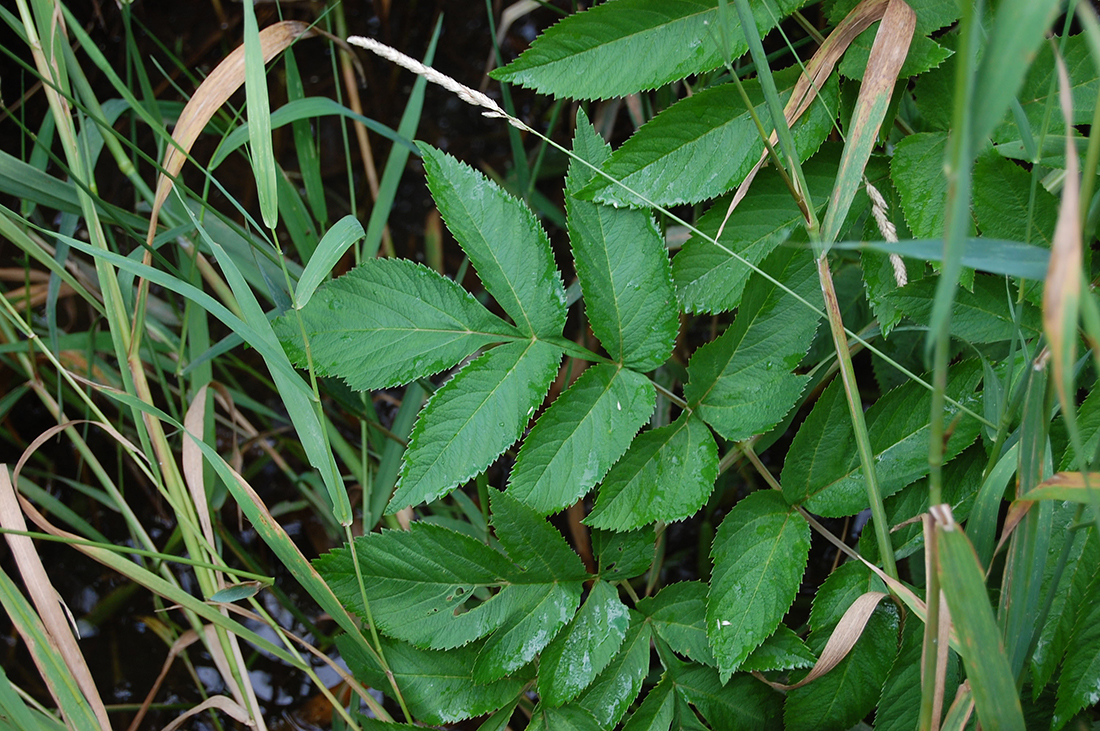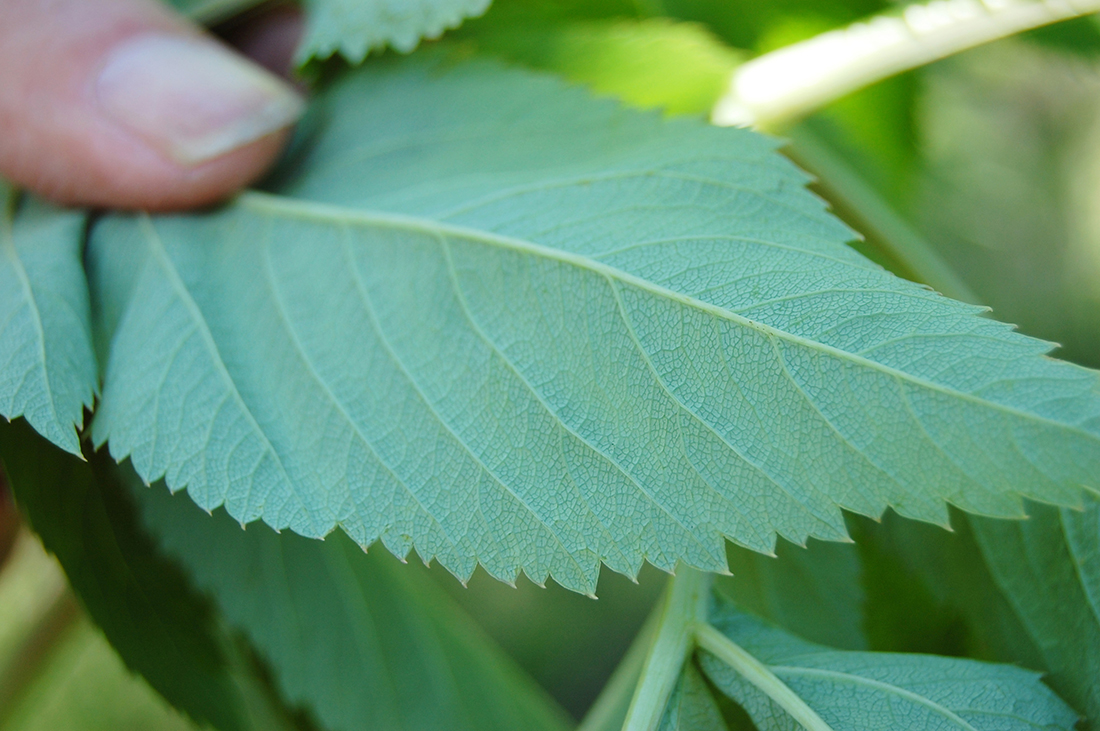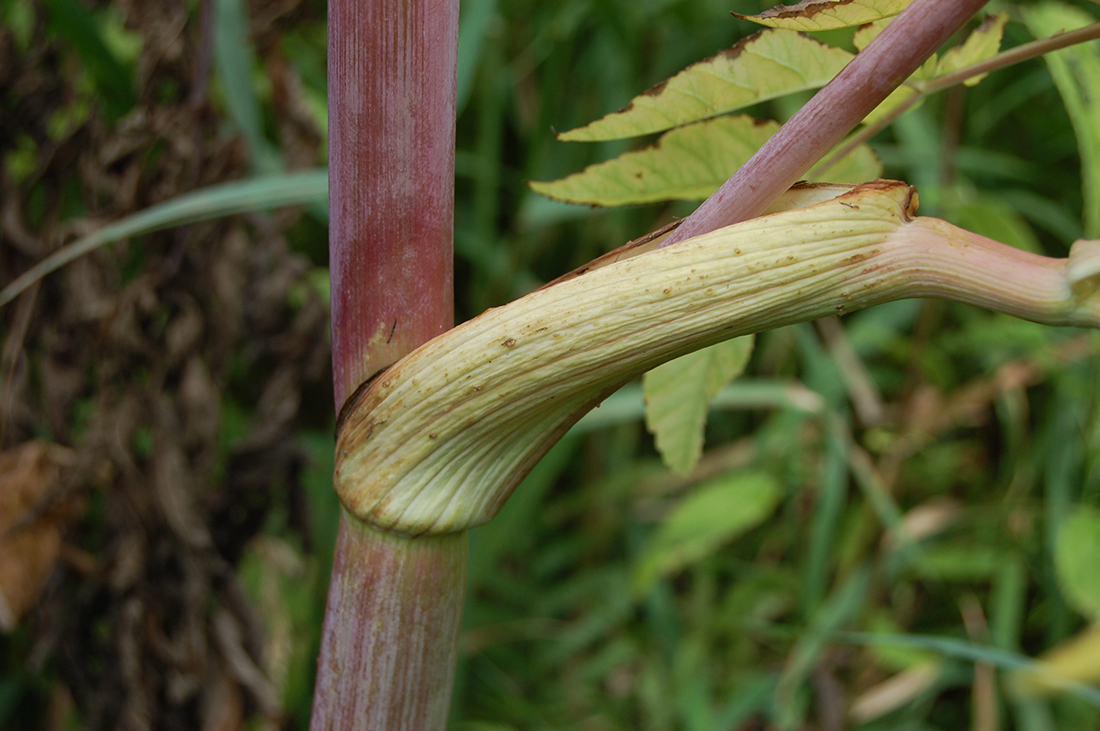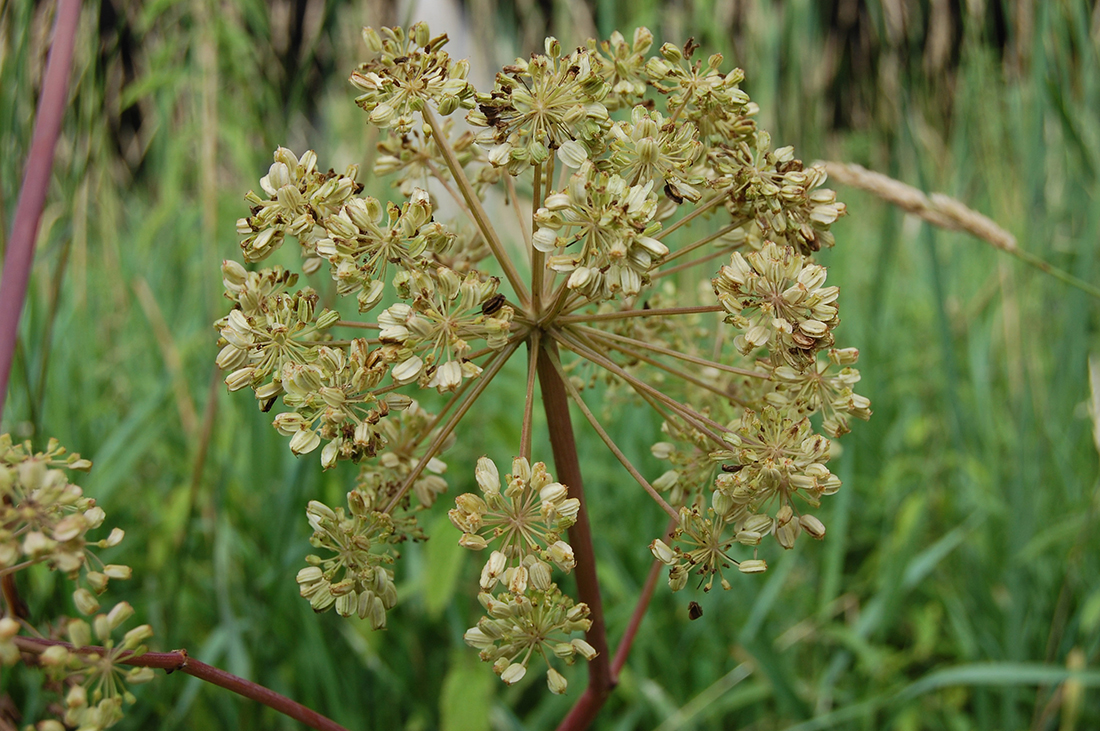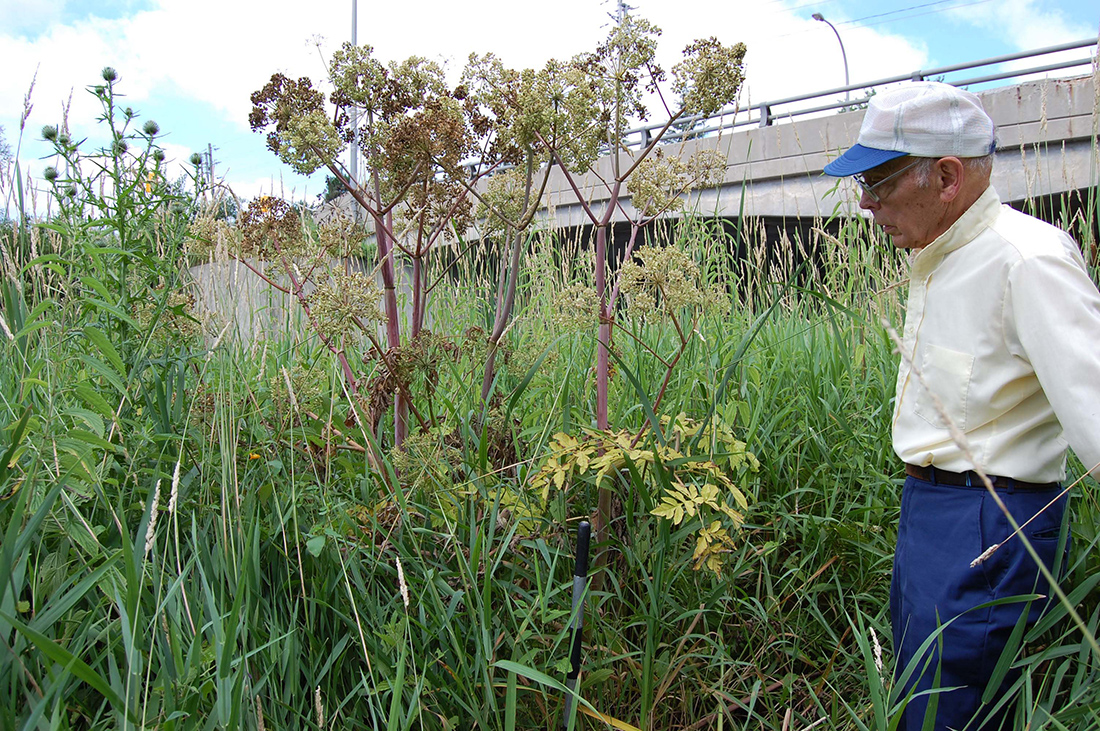Angelica
- Carrot or Parsley (Apiaceae family):
- Angelica atropurpurea L.
- EPPO code:
- ANKAT
- Other names:
- Purple angelica, great angelica, angélique
Species information
- Lifecycle:
- Biennial or perennial.
- Propagation:
- Reproduces by seed.
- Range and habitat:
- Native to Northern Europe and America. Prefers moist soil and partial shade, commonly found along riverbanks, swamps and wet areas.
Identification clues
Leaves
- Mature leaves:
- Large, compound leaves with many leaflets .
Mature plant
- Stem:
- Thick, purple and hollow; has ridges that run lengthwise down the stem resembling celery stalks; contains yellowish oil; grows up to 2.5 m in height.
- Flowers:
- White, globe-shaped, flowering heads which are up to 30 cm in diameter; flowers from June to September but may not flower in its first 2–3 years.
Helpful tip
Angelica has a thick, purplish and hairless stem with white, globe-shaped flowering heads that distinguish it from other “look-a-like” plants, namely giant hogweed. Historically, the stem, oil and leaves of this aromatic plant were used for culinary, medicinal and industrial purposes.
Toxicity
This plant is not known to be toxic, but can be confused with other plants from the carrot family that are toxic.
Often mistaken for
I know it's not Spotted water-hemlock because Angelica (up to 2.5 m in height) grows taller than spotted water- hemlock (1–2 m in height). Spotted water-hemlock has flat, umbrella-shaped flowering heads, whereas Angelica's are globe-shaped. Leaf veins of Angelica go to the tips of the teeth rather than to the notches between the teeth as in spotted water-hemlock.
I know it's not Giant hogweed because Angelica is a smaller plant. Although the stem of angelica can be red/ purple, it is hairless compared to the red/purple and hairy stem of giant hogweed.
Angelica’s large compound leaves are comprised of many small leaflets while giant hogweed’s leaf contains 3 large and deeply cut lobes. The flowering umbels of angelica are smaller and globe-shaped, whereas giant hogweed umbels are up to 1 m in diameter and are flat or half-moon shaped.
